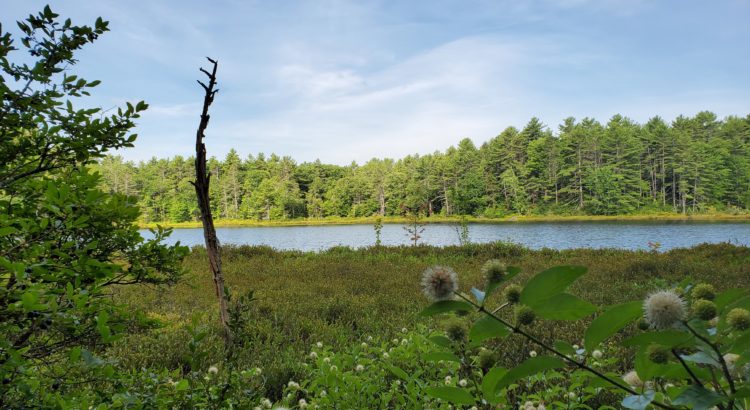By Xandri Clifton, Interpretive Ranger at Greenfield and Monadnock State Parks
My experience as an interpreter has been an interesting one—just like all the other interpreters across the state. What’s different about mine, is that I work at Greenfield State Park (the largest campground in the state) and Monadnock State Park (the most hiked mountain in the state). Both, clearly, have high visitation but attract different crowds—which has been a fun challenge for interpretation.
While hiking in both parks I’ve noticed some interesting similarities between the two very different landscapes. Namely, the plants and geological features of note. Here is a summary of my findings:
Blueberry Bushes
One of the most popular plants (in terms of both number of individual plants and popularity among visitors) is the blueberry bushes that litter the subalpine area of Monadnock and the trail around Hogback Pond. Blueberries thrive in acidic soil. On Monadnock, this acidity is provided by the unfiltered rain coming down the mountain. Rain tends to be slightly acidic and with the bald top of the mountain, it is not heavily filtered by other plants. Similarly, Hogback Pond consists entirely of rainfall (and some runoff) because it has no flow from any other body of water—a characteristic of bogs.
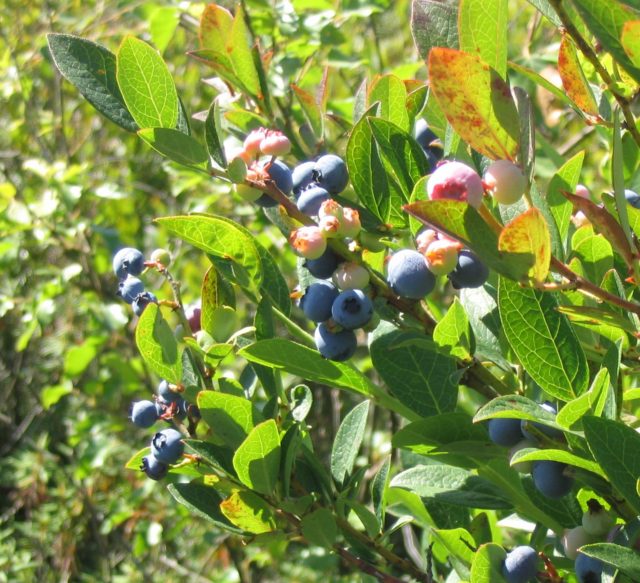
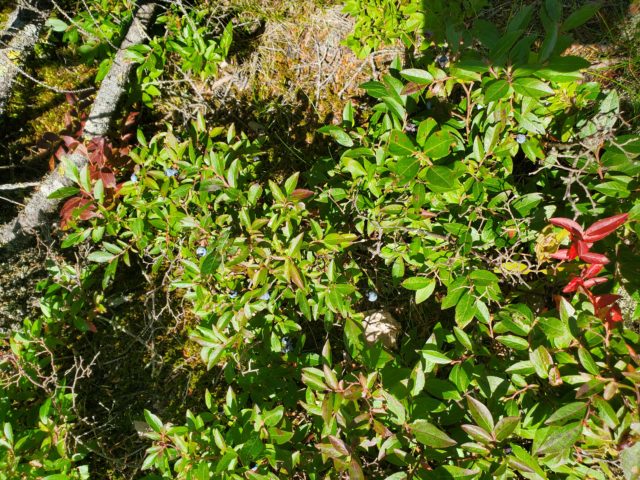
There are two different species, Highbush Blueberries and Lowbush Blueberries; both can be found at either site. Highbush are more common at Hogback Pond
Spruce Trees
Another feature you will notice when hiking in either park is the change in tree species from one area to another. Above 2,900 ft (and a lot lower at Hogback) you’ll see more Spruce trees. Red Spruce blankets the slopes, and Black Spruce lie in the kettle (A kettle is a depression/hole formed by retreating glaciers or draining floodwaters).
These two species are closely related but prefer very different environments in the southern part of their range. Both species spread more North than New Hampshire but don’t go much farther South than the Monadnock Region, though the Red Spruce does follow the Appalachian Mountains down a bit further.
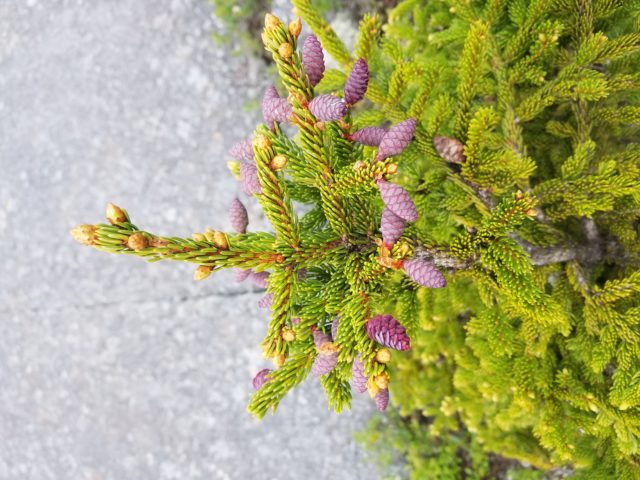
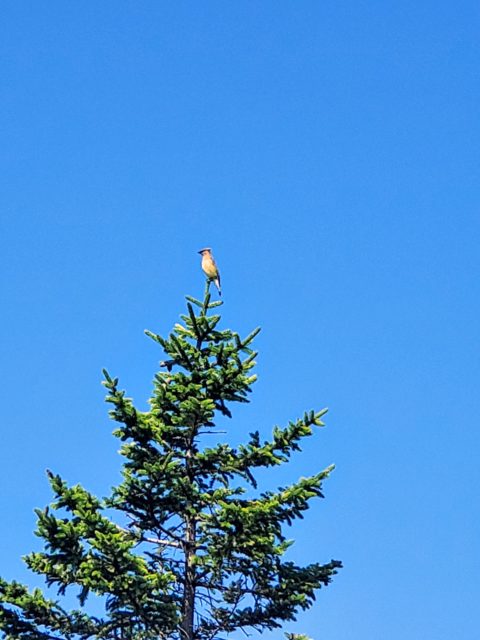
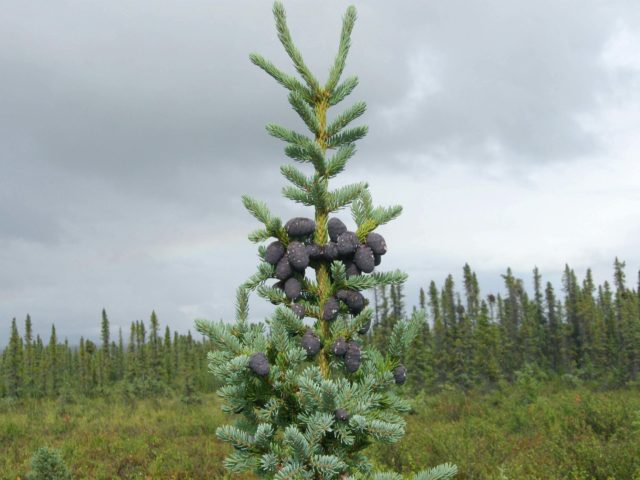
The Black Spruce is much more widespread in Canada and the North Woods, but this far south (funny to think of part of New Hampshire as ‘south’) the trees only really grow in peatlands. Hogback bog is a perfect haven for it down here.
Both trees will grow in Alpine zones and are known to become ‘Krummholz’ which is a German word for crooked, bent, or twisted. It describes a phenomenon where trees have vegetation on only one side: a result from turbulent winds and freezing temperatures.
Laurel Flowers
A small, but eye-catching, flower also inhabits both environments: the Bog Laurel plant.
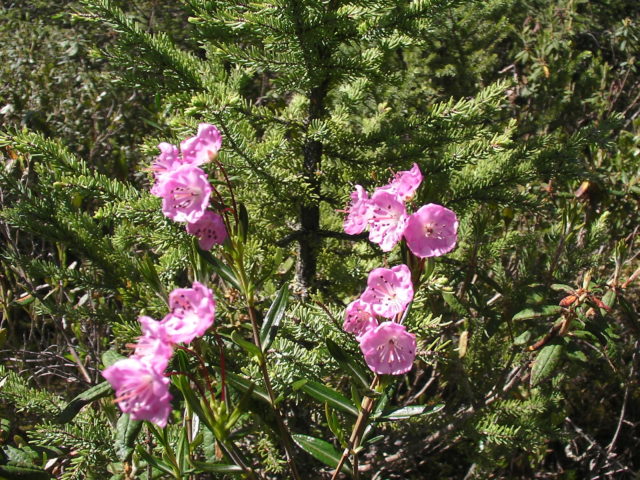
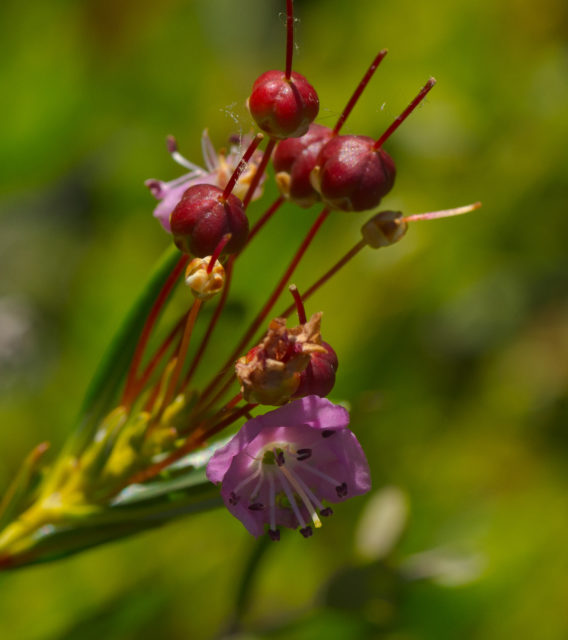
The flowers have mostly faded; however, the seeds will be starting to form soon, which are equally as striking.
Like many of the other plants mentioned, it prefers acidic soil; as such, it thrives in both environments. While it looks delicate and pretty, it is highly poisonous—be sure not to mistake any part of this for the blueberry it tends to grow near!
Glaciers
As with much of the terrain of New England, both natural features are the way they are thanks to glaciers.
Monadnock was carved from the land by glaciers passing through. Before then, it was a dense canyon in between even larger mountains. There isn’t much research into the geological history that I’ve been able to find, sadly.
Hogback Pond was formed when a relatively small chunk of glacier fell of the larger ice sheet while retreating. While melting, it created a depression and glacial eskers. Eskers are where the melting ice creates rivers running down to the depression being created underneath the glacier chunk. As a result, there are smooth ridges on the perimeter of the bog; some are incorporated into the trail circling it.
Will eventually disappear
Similar pasts, similar presents, and similar futures.
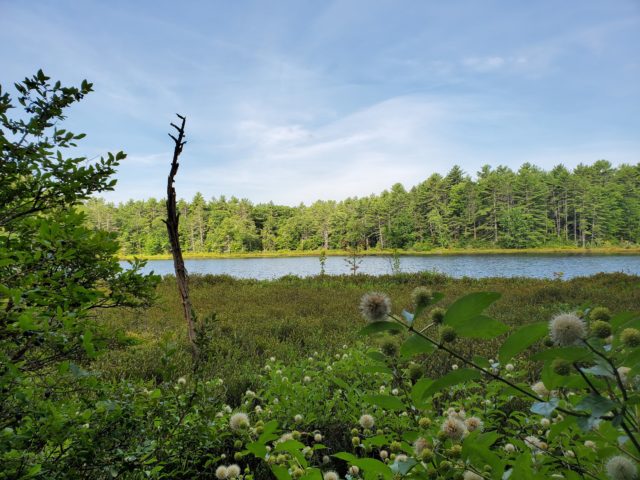
Like many geological features we value, both mountain and bog will eventually disappear. As stagnant as the Earth seems, things are slowly changing. This is on the scale of millions of years but will eventually happen. Monadnock seems to be changing a little faster than we would hope, however. The mountain has been through a lot since European Colonists came to the area.
The first recorded hike up Monadnock (people had undoubtedly been up earlier) was in 1725. At that time, the summit of Monadnock was coated in a blanket of trees (likely lots of Red Spruce). Intentional fires changed that, scalding the trees, shrubs, and even soil from the top.
More recent effects on the mountain include trail widening and ‘biodegradable’ litter. The trail is difficult up Monadnock, and it may seem easier to go on the edge of the trail to avoid rocks, but this tramples vegetation and increases erosion from rainfall.
The ‘biodegradable’ litter most commonly seen on the trails are orange peels and pistachio shells. While, yes, these items are compostable, they are still litter in our park. Neither is native here, so they don’t belong in our forests! Fun side note: both oranges and pistachios are from Asia.
Interestingly, there used to be a snack stand on the summit of Monadnock. It was taken down as a way to prevent trash from ending up on our mountain—let’s keep getting better!
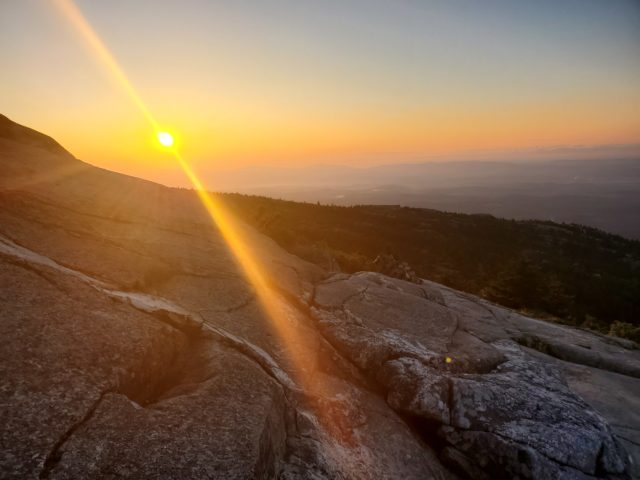
So, please stay on the rocky trail, and pack out all your trash, so we can keep our impact minimal, and keep Monadnock in the best shape we can—after all, it won’t be here forever.
If you get a chance to hike in either (or both) of these areas, see what other similarities you can find (there are many more I didn’t list here)!

